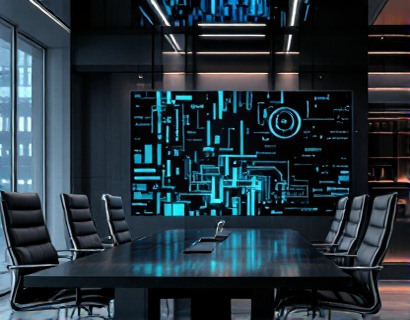Maximizing Architecture Firm Efficiency with Advanced Software Solutions
In the competitive landscape of architecture firms, efficiency and productivity are paramount. Advanced software solutions play a crucial role in streamlining internal processes and enhancing user experience, allowing architects to concentrate on their creative excellence. This article delves into the various ways technology can optimize project management, resource allocation, and client interactions, ultimately leading to improved productivity and collaboration within architecture firms.
Streamlining Project Management
Effective project management is the backbone of any successful architecture firm. Advanced software solutions offer robust tools that simplify the planning, execution, and monitoring of projects. These platforms provide centralized dashboards where project managers can track progress in real-time, assign tasks, set deadlines, and manage budgets. By automating routine tasks such as report generation and status updates, these tools reduce the administrative burden on team members, allowing them to focus on more critical aspects of the project.
One key feature of these software solutions is the ability to integrate with other tools and systems used within the firm. For instance, integration with CAD software ensures that design changes are automatically reflected in the project management system, reducing the risk of errors and miscommunications. This seamless integration enhances the overall efficiency of the project lifecycle, from initial concept to final delivery.
Optimizing Resource Allocation
Efficient resource allocation is essential for maximizing the productivity of an architecture firm. Advanced software solutions provide powerful resource management tools that help firms allocate their human and material resources more effectively. These tools enable managers to visualize resource availability, track workloads, and predict potential bottlenecks.
By leveraging data analytics, these platforms can offer insights into resource utilization patterns, helping firms make informed decisions about staffing and equipment allocation. For example, a software solution might highlight that certain team members are consistently overburdened during specific phases of the project, allowing managers to redistribute tasks more evenly. This not only improves overall efficiency but also enhances job satisfaction and reduces burnout among team members.
Enhancing Client Interactions
Client satisfaction is a critical factor in the success of any architecture firm. Advanced software solutions can significantly enhance client interactions by providing tools for better communication, collaboration, and project visualization. Virtual reality (VR) and augmented reality (AR) integrations, for instance, allow clients to experience designs in a more immersive and interactive way, leading to clearer understanding and faster decision-making.
Project portals and collaborative platforms built into these software solutions enable clients to access project updates, documents, and communication in one centralized location. This transparency builds trust and ensures that clients feel involved throughout the project lifecycle. Additionally, these platforms often include features for collecting and managing client feedback, which can be invaluable for continuous improvement and building long-term relationships.
Improving Internal Collaboration
Collaboration among team members is vital for the success of complex architectural projects. Advanced software solutions foster a collaborative environment by providing tools that facilitate communication, document sharing, and real-time editing. Cloud-based platforms ensure that all team members have access to the most up-to-date information, regardless of their location.
Version control is another critical aspect of internal collaboration. These software solutions track changes to documents and designs, allowing team members to see the evolution of a project and revert to previous versions if necessary. This not only prevents confusion but also ensures that everyone is working with the latest information, reducing errors and rework.
Boosting Productivity through Automation
Automation is a key driver of productivity gains in architecture firms. Advanced software solutions can automate a wide range of tasks, from routine data entry to complex workflows. For example, automated workflows can trigger specific actions based on predefined conditions, such as sending notifications when a task is completed or when a deadline is approaching.
Another area where automation shines is in the management of repetitive tasks, such as generating standard reports or creating initial design templates. By automating these tasks, team members can focus on more value-added activities that require their expertise and creativity. This shift not only increases efficiency but also enhances job satisfaction by allowing professionals to engage in more meaningful work.
Enhancing Data Management and Security
Data management and security are critical concerns for architecture firms, given the sensitive nature of project information. Advanced software solutions provide robust data management features, including secure storage, access controls, and backup options. These features ensure that sensitive data is protected from unauthorized access and data loss.
Moreover, these platforms often comply with industry standards and regulations, such as GDPR and LEED, which is essential for firms operating in multiple jurisdictions. By leveraging these solutions, architecture firms can maintain compliance while ensuring that their data is well-organized and easily accessible when needed.
User Experience and Adoption
The success of any software solution depends significantly on the user experience it provides. Advanced architecture software is designed with the end-user in mind, featuring intuitive interfaces and user-friendly workflows. Training and support resources are also crucial to ensure a smooth transition and high adoption rates among team members.
Firms should consider software solutions that offer comprehensive onboarding programs, including tutorials, webinars, and dedicated support teams. By investing in user training, firms can maximize the benefits of these tools and ensure that their teams are fully leveraging the software's capabilities.
Case Studies and Real-World Applications
To better understand the impact of advanced software solutions in architecture firms, let's look at a few real-world examples. Firm A, a mid-sized architecture practice, implemented a project management software that integrated with their CAD tools. Within six months, they reported a 30% reduction in project delivery time and a 25% decrease in administrative tasks. The software's real-time tracking and automated reporting features allowed their project managers to make data-driven decisions, leading to more efficient project execution.
Firm B, a large international firm, adopted a cloud-based collaboration platform that included VR and AR capabilities. This allowed them to conduct virtual site visits and client presentations, reducing travel costs and time. The platform also facilitated better communication among remote team members, leading to a more cohesive and productive work environment. Client satisfaction scores improved significantly, with many clients praising the immersive and interactive presentation of designs.
Future Trends and Innovations
The architecture software landscape is continually evolving, with new innovations on the horizon. One emerging trend is the integration of artificial intelligence (AI) and machine learning (ML) to further enhance automation and decision-making. AI can analyze vast amounts of data to predict project outcomes, optimize design parameters, and even assist in the generative design process. ML algorithms can learn from past projects to provide recommendations and automate routine tasks more effectively.
Another area of innovation is the use of blockchain technology for secure and transparent transaction management. Blockchain can ensure the integrity and traceability of contracts, payments, and other transactions, reducing the risk of fraud and disputes. This technology can also streamline the supply chain management for construction projects, ensuring that materials are sourced and delivered efficiently.
As these technologies mature and become more accessible, architecture firms that adopt them early will gain a competitive edge. By staying ahead of the curve, firms can not only improve their internal processes but also offer more innovative and efficient services to their clients.
Conclusion
In conclusion, advanced software solutions offer architecture firms a comprehensive toolkit to maximize efficiency, enhance user experience, and drive success. By streamlining project management, optimizing resource allocation, enhancing client interactions, and improving internal collaboration, these tools enable architects to focus on their creative vision while ensuring operational excellence. As the industry continues to evolve, embracing these technologies will be crucial for architecture firms looking to thrive in a competitive market.










































